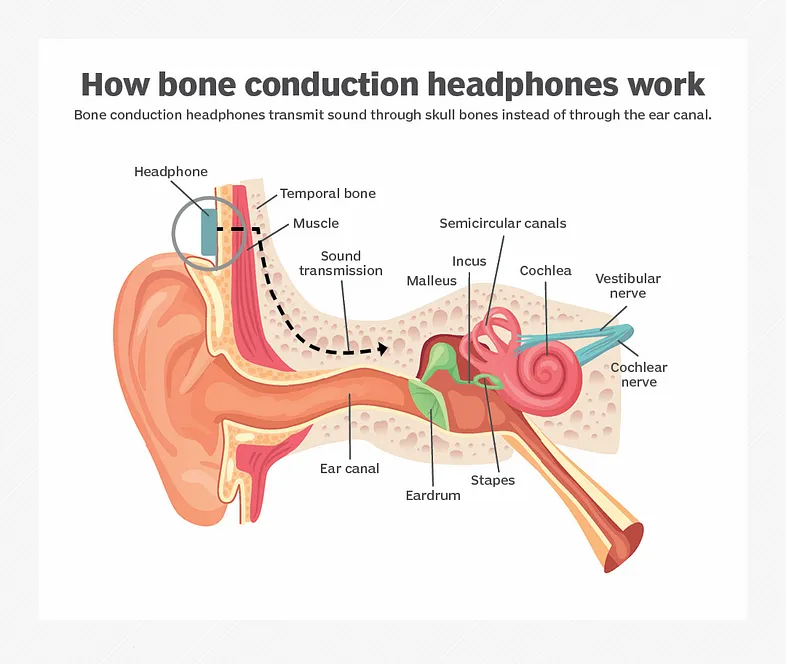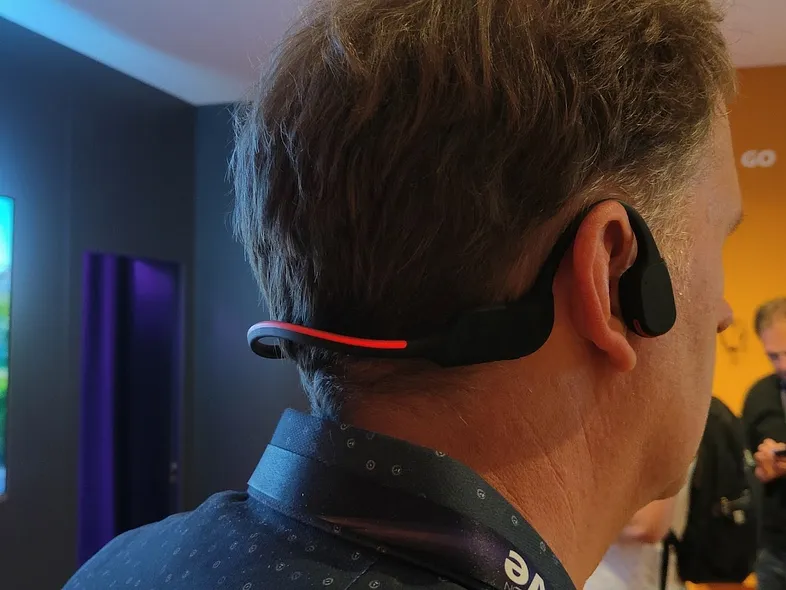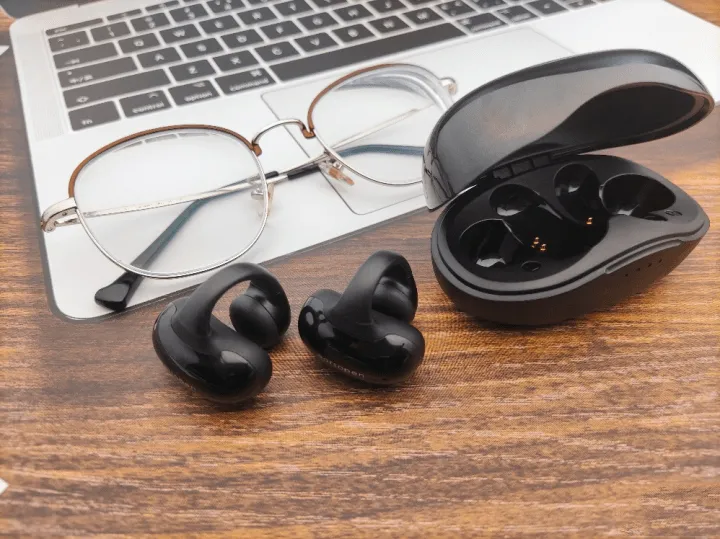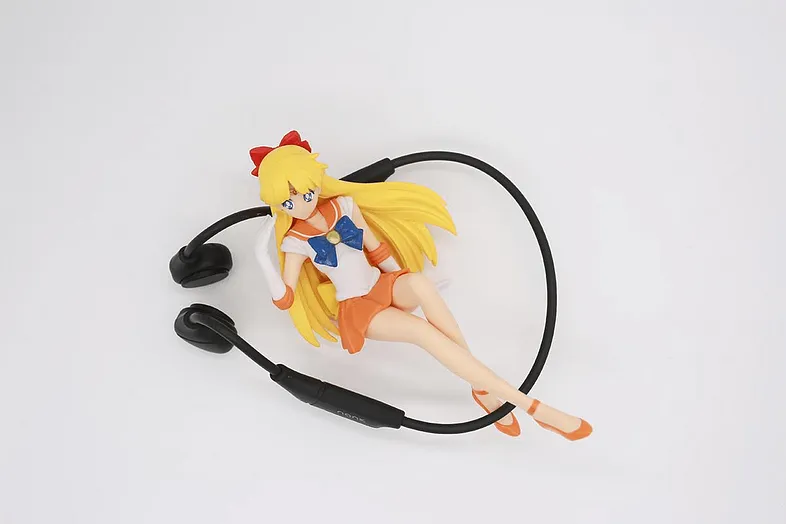What Is The Difference Between Real and Fake Bone Conduction Headphones?
There is no doubt that bone conduction headphones are a revolutionary product. They are the healthiest headphones, so they are welcomed by many sports fans. Due to the popularity of this kind of headphones, unscrupulous merchants have also begun to target them, launching various low-quality fake bone conduction headphones. They even boasted that this kind of headphone is an upgraded version of bone conduction headphones, and even said that they are the final form of headphones. Many people who do not know much about bone conduction headphones have been fooled because of this, not to mention that they have spent money that they should not have spent, and sometimes bought unhealthy and unsafe products, causing irreparable damage.
So what is the difference between real and fake bone conduction headphones?
Bone conduction headphones are a new type of headphones that use bones to transmit sound. All headphones that do not use bones to transmit sound are fake , even if they look exactly the same. From this perspective, there are at least the following differences between true and fake bone conduction headphones

1) Different sound transmission methods: real bone conduction headphones transmit sound through bones, while fake ones transmit sound through the air;
2) The sound unit is different: the real bone conduction headphone attached to the temple is the bone vibration unit, which is responsible for converting the sound signal into mechanical vibration and transmitting it to the inner ear through the bone; while the fake one is attached to the temple are two speakers. After vocalization, sound waves travel through the air outside the ear and in the ear canal.
3) The airtightness of the body is different: the real bone conduction headphones is an integrated body, and it has no holes, while the fake ones must have holes in the body, otherwise, the sound waves cannot be transmitted.
How do bone conduction headphones work?
To understand how bone conduction headphones work, you need to understand how the ear works.
The ear is divided into the outer ear, middle ear, inner ear, and auditory nerve from front to back. The outer ear is what we call the part of the ear that is visible from the outside. When sound enters the outer ear, it travels directly to the eardrum, and the sound that hits the eardrum vibrates the air in the middle ear like a drum, causing the air to vibrate and travel to the cochlea of the inner ear. Shaped like a snail, the cochlea contains lymph fluid and sound-sensing cells called hair cells. The vibration of the eardrum causes the lymph fluid and hair cells in the cochlea to vibrate. Hair cells convert this vibration into an electrical signal and transmit it to the auditory nerve. The auditory nerve carries the electrical signals received from the hair cells to the brain. The center of the brain processes the electrical signals it receives, resulting in the sounds we hear. This way of transmitting sound is the way of air conduction. Our common headphones use air-conduction sound transmission, but the working principle of bone conduction headphones is completely different. It uses bone conduction sound.

We can compare the difference between these two sound transmission methods:
The sound transmission path of air conduction headphones: outer ear → eardrum→ middle ear → inner ear (cochlea) → auditory nerve → brain
The sound transmission path of bone conduction headphones: temporal bone (skull) → inner ear (cochlea) → auditory nerve → brain
Compared with air conduction headphones, the sound transmission path of bone conduction headphones does not have several steps of “outer ear→eardrum→middle ear”. When using them, the sound conduction process is that the sound source vibrates and directly transmits the sound to the inner ear (cochlea) through the skull. This working principle also makes the headphones do not need to be inserted into the ear, which better protects the ear canal and eardrum.
So, how to choose the right one among the mass bone conduction headphones? I think we must pay attention to the two key points:sound quality and sound leakage reduction. Next, I will recommend some excellent headphones.
1. Wissonly Hi Runner bone conduction headphones

Recommended reason:
Wissonly is a brand known for its technology and the fastest growing brand in recent times. Their R&D team are all technical experts in the field of bone conduction headphones. As early as 2012, they started to develop bone conduction headphones that don’t hurt ears. With advanced bone conduction vibration technology, they have been recommended by the majority of otologists!
What impresses me most about Wissonly Hi Runner is their excellent sound quality. They are equipped with a large-size directional bone conduction vibration unit, which increases the effective sounding area by 35% through structural optimization, thus making the sound range wider and the sound more stereoscopic and shocking. At the same time, they have also improved the problem of sound quality loss caused by low sound transmission efficiency of traditional bone conduction headphones. Together with world-class audio tuner, they have customized an exclusive sound quality output scheme for Wissonly Hi Runner headphones in the world’s top tuning laboratory. More than 20 audio tuners have been adjusted for 85,036 times, finally showing a really good sound quality which belongs to bone conduction.
The body of the Wissonly Hi Runner is made of memory titanium, which can self-adjust the contact area to ensure a good wearing experience of headphones and take into account more users.
As the core component of the product, the headphones plays a key role in the product experience. Wissonly Hi Runner is equipped with Bluetooth 5.0 chip, and the Bluetooth connection is very stable. It also has 32G of built-in memory, and it also supports IPX8 waterproof, which can even be used for diving.
2.Philips 7607 bone conduction headphones

Recommended reason
Its sounding unit adopt a large-size vibrator of 17mm, which makes it have the effect of high, medium and low triple-frequency balance in sound quality performance. The low-frequency dive is sufficient, the medium and high frequencies are clear and not harsh, but there will be some missing sounds. It is also equipped with an intimate LED night run lamp at the rear end of the body, which can turn on the LED by turning on the key three times in a row. It also has three modes, which is suitable for wearing at night, so that people around it can perceive their own position and ensure their own safety factor to a certain extent.Its IPX6 waterproof rating is not afraid of sweat in daily wear.
3 AfterShokz OPENRUN PRO bone conduction headphones

Recommended reason
Openrun Pro are ear mounted style headphones. But thanks to the lightweight materials such as titanium alloy used in the basic frame of the headphones, the overall weight of the headphones is only 26g, and there is no feeling of weight when worn. It is worth mentioning that the headphones have an IP67 waterproof and dustproof grade, and that they can be washed and rinsed with water. In addition to benefiting from the plating process on its surface, of course, also because of the overall body design, Openrun Pro have better waterproof characteristics. In addition, they also uses dual silicon microphones. In the right side of the headphones, you can see the microphone cut-out reserved for the microphone. With CVC’s noise reduction algorithm, they can effectively eliminate the impact to calls in complex environments.
4.Earsopen SS900 bone conduction headphones

Recommended reason:
With the support of AVV’s precise vertical vibration technology, the vibration intensity and frequency of SS900 is improved, which makes up for shortage of sound quality caused by small sound producing area of 10mm small size vibration unit, and makes the low frequency sound more full. The 7.5g body weight is better with the clip-on ear type, which makes it more portable. However, the clip-on ear type makes the ears uncomfortable after wearing for a long time, which is its disadvantage.
5.Nank Runner CC3 bone conduction headphones

Recommended reason:
Runner CC2 is made of titanium alloy, with a body weight of 28g, and the overall wearing experience is good. The sound quality and sound leakage are better than their previous products, but they still need to be improved. The headphones also support high-definition call noise reduction, which is a plus.
The ability of this headphone is relatively average, and there are no special highlights or obvious shortcomings. As an entry-level bone conduction headphone, it is still qualified.
Among the above five products, Wissonly and Aftershokz are my favorite. Their sound quality, sound leakage reduction and comfort are all very good. Compared with the two brands, Wissonly’s product parameters are better, cost-effective, and worth buying